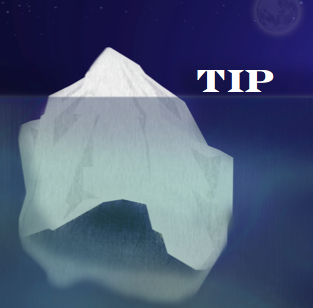
After about 4 years of not posting to this site, I have decided to return to the original ideas that resulted in so much innovation in this space. For a quick review, the term “Ingenesist” is derived from the Latin word for Engineer – A Maker of Useful Things.
The TIP archives found here include almost 600 blog posts (site map) approaching 1/2 million words. You’ll find the original thesis for the international mobility of engineers under NAFTA between US, Canada, and Mexico. That project involved 6 universities, the California Board of Professional Engineers, The National Council of Examiners for Engineers and Surveyors, and the National Society of Professional Engineers – and with the cooperation and support of CETYS University, the Baja California State Government, and over 250 Engineers from Mexico who presented the US Engineering Board exams.
That work was further developed at the Boeing Commercial Aircraft Company and published at the Boeing Technical Excellence series of conferences by their Technical Fellowship. From this effort, TIP developed The Innovation Bank that would match most worthy knowledge surplus to most worthy knowledge deficit to form an internal market (network) for knowledge transfer. That work is memorialized in an old 2007 Patent Application
Later, TIP co-founded Social Flights – a ride sharing service for private jets. The innovation was our ability to predict most likely passengers and match them with most likely seats available on private aircraft. Supply and demand were both dynamic. Keep in mind that this was before Uber and we were acting within a highly regulated industry. Ultimately Social Flights was acquired.
TIP developed three key innovations:
The Value Game: An economic game where multiple self-interested agents must share a common asset. Their motivation and incentive would be to preserve the asset rather than consume the asset. This was supposed to simulate a sustainable economy such as what is desperately needed for our planet. The Value Game originated at Boeing and was tested with Social Flights and successfully deployed in several remodeling projects for condominium associations (shares asset communities)
The WIKiD Tools Algorithm. WIKiD Tools creates a mathematical relationship between (viewed backwards) Data, information, Knowledge, Innovation, and Wisdom. WIKiD tools is useful when you can’t measure something like innovation directly, you could measure a derivative such as the “rate of change in knowledge” as a proxy. In this way,the richness of Wisdom, Information, Knowledge, information, and Data can be more predictable.
Curiosumé is a combination of the words Curate and Resumé. The idea behind curiosumé is to convert the CV or Resumé to a form of code that can be overlaid on other information databases such as Wikipedia, Amazon ontology, even the Library of Congress. This allows us to measure intangible assets as they act in a community.
Then Came Blockchain:
We stopped publishing to The Ingenesist Project in 2016 in order to apply TIP innovations to emerging technologies such as Social Media, Blockchain, AI, etc. It appeared that the decentralization of the engineering profession would be an important step in achieving the original goals of sustainable global enterprise. During this time, I also started a small engineering consulting firm called CoEngineers, PLLC that served a traditional local market bringing engineering services to a retail clientele. CoEngineers, PLLC helped pay the bills while also serving as a sandbox for testing and developing TIP Innovations. Our first entry into blockchain was the creation of a token called Quant on the BitShares Blockchain.
SIBOS, NSPE Task Force, and National Association of Insurance Commisioners: Collectively each of these organizations represent the Banking Industry, The Insurance Industry, and the Engineering Profession. TIP published 3 whitepapers that became the basis for the next iteration. It was noted that each of these industries trade an invisible currency called Risk. It was found that TIP methodologies were better described by actuarial math (probabilities) rather than interest laden monetary metrics. This 3-way association became the genesis of the Insurance / Engineering Blockchain Consortium. This was later changed to the Integrated Engineering Blockchain Consortium or IEBC.
IEBC: Over the course of several years, IEBC was the umbrella organization for 150 engineers, scientists, and business persons who advanced the idea of a decentralized engineering network to mesh with the banking and insurance environments. IEBC published numerous seminal documents and spoke at dozens of industry conferences. The two main achievements were to publish a whitepaper with detailed specifications for a blockchain strategy that would accommodate all prior TIP innovations. The IEBC team built a prototype blockchain by cloning an existing successful chain and modifying it to suit MVP demonstration. IEBC ultimately ramped down for lack of funding. But everything we learned is now open for iteration.
Where to re-Start? TIP has always been a place where ideas are formed and implemented either by ourselves or by others. Many TIP Ideas survive to this day in the many hundreds of engineers and scientists who have participated in the conversations, the start-ups, the publications, lectures, and webinars over the last 15-20 years. We can see many past TIP contributors advancing in their careers, businesses, and leadership roles.
There is something that binds people to this network – it has to do with the underlying belief that Makers Of Useful Things are the cause, not the effect, of sound and sustainable economic activity. The flaw of market capitalism has the world operating in a mirror image of the economy that was supposed to happen. The solution is more about perception than it is about revolution.
